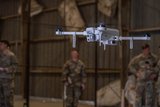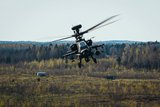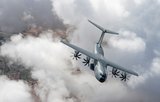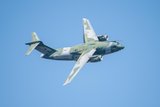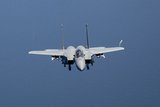Reiser secures new NH90 Sea Tiger maintenance training contract
Reiser has also delivered MTRs to the French Armed Forces and the Australian Defence Force. (Photo: Reiser)
Resier Simulation and Training has won a NH90 Maintenance Training Rig (MTR) contract for the German Navy. The project reportedly started on 7 November 2024 and has a two-year timeline.
The company has already delivered four MTRs to the German Armed Forces in 2010, with additional units reportedly given to the German Air Mobility Training and Exercise Centre and the German Navy. According to Reiser, the training rig covers more than 100 standard and special training procedures which include engine replacement and emergency folding of the main rotor blades.
Reiser CEO Dr. Johannes Hain said: “This contract reflects the customer’s continued trust and satisfaction in our innovative MTR approach. With each new project, Reiser reaffirms the commitment to delivering high-quality training solutions tailored to the evolving needs of military operators worldwide.”
Related Articles
German airmobile forces to get new NH90 helicopter crew trainer
NH90 helicopter Block 1 upgrade launched
Developed as a multinational programme, the European NH90 was designed to meet NATO requirements and have multirole capabilities. It comes in two variants: the NATO Frigate Helicopter (NFH) for maritime and utility operations is one of two variants. The other is the Tactical Transport Helicopter (TTH) for land-based utility and troop lift.
The German Armed Forces ordered 31 NH90 helicopters in 2020 and expects to have the first batch delivered in 2025. On 8 November, Airbus announced that it had completed flight trials for the helicopter.
A €600 million (US$641 million) Block 1 upgrade for the NH90 was announced in June 2024. This would reportedly include Belgian, German, Dutch and Italian NH90 helicopters.
Related Programmes in Defence Insight
Related Equipment in Defence Insight
More from Air Warfare
-
![Dubai Airshow 2025: Lockheed’s AGM-158 XR flight tests planned for 2026]()
Dubai Airshow 2025: Lockheed’s AGM-158 XR flight tests planned for 2026
The AGM-158 XR, which started as a Lockheed Martin internal investment, was first unveiled in September 2024.
-
![Dubai Airshow 2025: Airbus reveals progress on drone mothership plans for A400M]()
Dubai Airshow 2025: Airbus reveals progress on drone mothership plans for A400M
Airbus is working to expand the mission capabilities of its A400M aircraft, including a 40t payload increase, to boost Europe’s defence capabilities.
-
![How are next-generation ejection seats helping pilots when they need it most?]()
How are next-generation ejection seats helping pilots when they need it most?
The ACES 5 ejection seat from RTX’s Collins Aerospace introduces new, innovative and patented technologies to help save lives.
-
![Dubai Airshow 2025: Embraer strengthens C-390 UAE bid with completion centre plans]()
Dubai Airshow 2025: Embraer strengthens C-390 UAE bid with completion centre plans
The proposals, along with a recent MoU signed with local industry, move the company another step forward in its bid to replace the UAE’s ageing transport aircraft.
-
![Viper Shield electronic warfare suite for F-16s enters low-rate initial production]()
Viper Shield electronic warfare suite for F-16s enters low-rate initial production
The L3Harris Viper Shield is seen as a key component in keeping the newest generation of F-16s up to date and providing a retrofit capability to earlier aircraft.
-
![Dubai Airshow 2025: Boeing emphasises uncrewed teaming capability plans for F-15EX]()
Dubai Airshow 2025: Boeing emphasises uncrewed teaming capability plans for F-15EX
The F-15EX is being promoted by the manufacturer as an ideal platform to pair with uncrewed systems.







